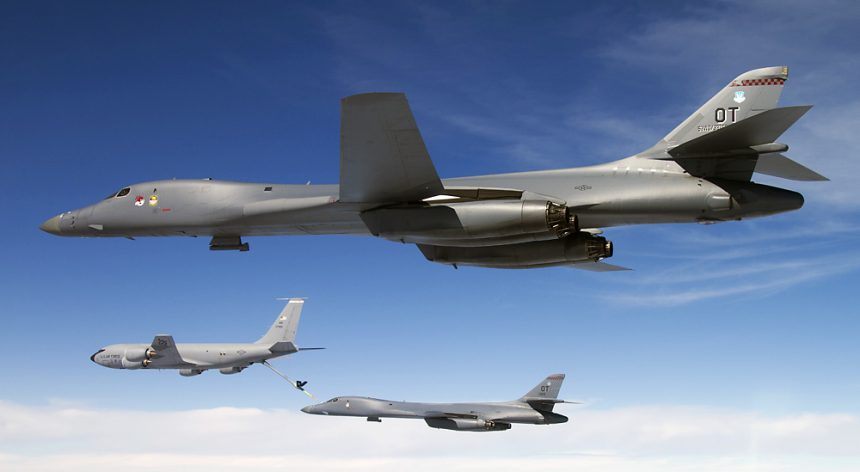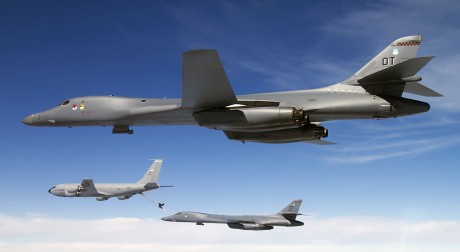Read here the update published on Apr. 06 at 23.05 GMT
It seems like Washington has taken Kim Jong Un threat seriously.
After moving two Langley’s F-22 Raptor stealth fighters to Osan airbase, in South Korea, launching a B-2 Spirit stealth bomber on a round-trip training mission over a South Korean’s gunnery range from the Continental U.S., and deploying THAAD anti-ballistic missile defense system to Guam, positioning two guided-missile destroyers in the waters near the Korean peninsula, the Pentagon has decided to strengthen its presence in the region by deploying several B-1 Lancer long range bombers to Andersen Air Force Base, Guam.
But, for the first time in the last few weeks, the deployment of the “Bones” to the Pacific atoll was not made public (at least, not yet), a fact that could be the sign that the U.S. is not only making symbolic moves (as the above mentioned ones), but it is preparing for the worst scenario: an attack on North Korea.
From his station in Amarillo, Texas, author, investigative journalist, technologies expert Steve Douglass heard something interesting. In a message he sent us on Facebook he said:
“Late last night I monitored “DARK flight of seven” on PRIME (311.000 MHZ STRATCOM PRIMARY) asking for current weather for UAM [airport code for Guam – Andersen Air Force Base]. On the frequency of 251.100 Mhz,DARK flight also was calling for “GASSR 11 and GASSR 12” (KC-135s) for “Tanker drag to BAB [Beale AFB, California]”.
“Dark” is the standard radio callsign for the 7th Bomb Wing’s B-1s based at Dyess AFB, near Abilene, Texas.
Even if U.S. bombers routinely deploy to Guam (where at least two B-2s are reportedly already based), the fact that seven “Bones” were apparently moving together is something a bit unusual, even if they were not going to Andersen AFB (they might need the weather report for UAM because it was an alternate airfield or simply a stopover on their way to somewhere else).
Actually, it’s also weird that some many big bombers were flying together (as the “flight of seven” heard by Douglass seems to suggest) since a standard ferry flight of multiple planes would normally see the aircraft move individually. And, another strange thing is that the pilot talked about their destination in the clear: if they wanted it to be secret, they would speak on secure radios.
Nevertheless, this might have been a non-standard deployment; a move ordered hours after U.S. satellites and spyplanes from South Korea and Japan had spotted North Korean missiles being readied for launch.
Image credit: U.S. Air Force
The deployment is not the only interesting thing Douglass, an unsurpassed expert in the field of military monitoring, has heard lately.
Earlier he had intercepted an interesting communication off a military satellite in which an Ellsworth AFB’s B-1B, callsign “Slam 1”, was training to hit a “missile facility” in Snyder, Texas.
A practice run for a mission in the DPRK with a school bus depot standing in for the real thing?
Maybe.
American B-1 bomber pilots have reportedly shifted their training programs, focusing on in East Asia, more than Afghanistan and the Middle East. And, above all, any training mission has many similitarities with actual sorties that would be flown against a real enemy in combat.
Anyway, Douglass has recorded an audio snippet of the exercise (available here). Based on the coordinates for Snyder, Texas here‘s the target on Google Maps.
You can read more about the military air activity recently monitored by Steve Douglass in an extremely interesting article he posted on his blog that not only summarize the contents of the messages he sent to The Aviationist, but provides some more details about the alleged overseas deployment of E-6 Mercury “doomsday” planes from Tinker AFB, Oklahoma.















